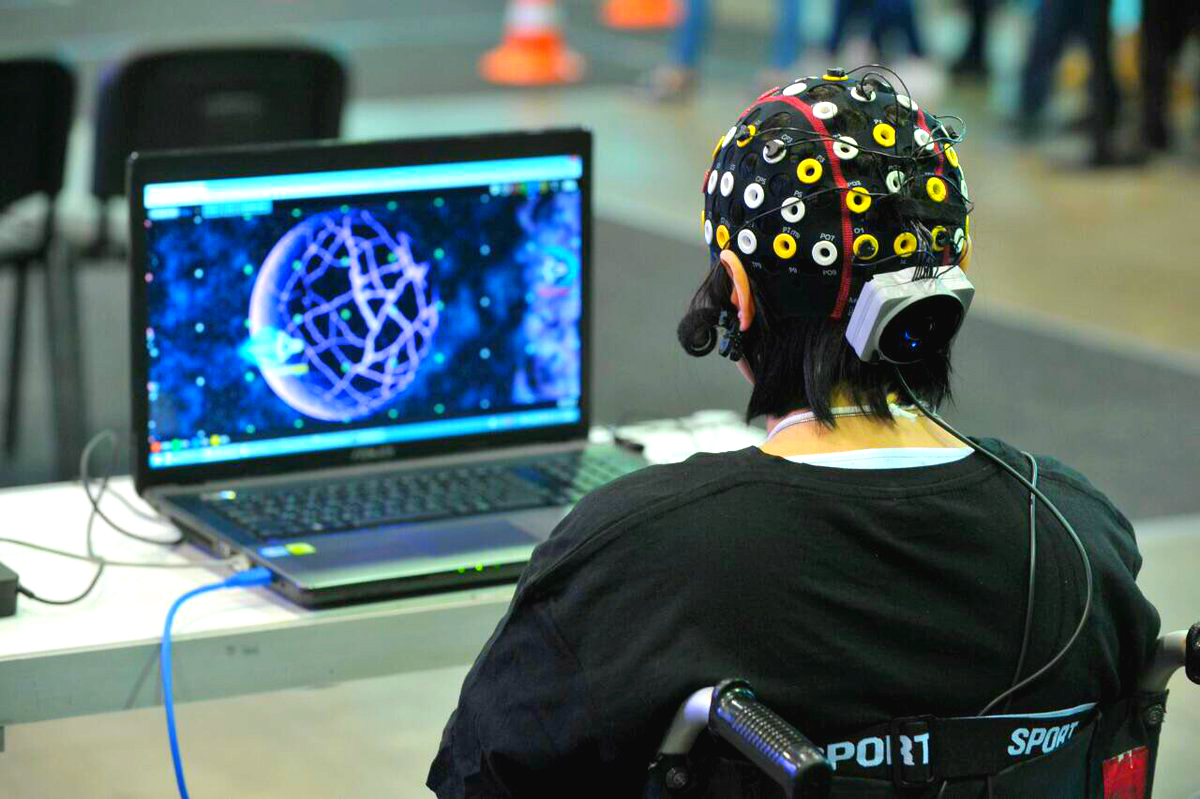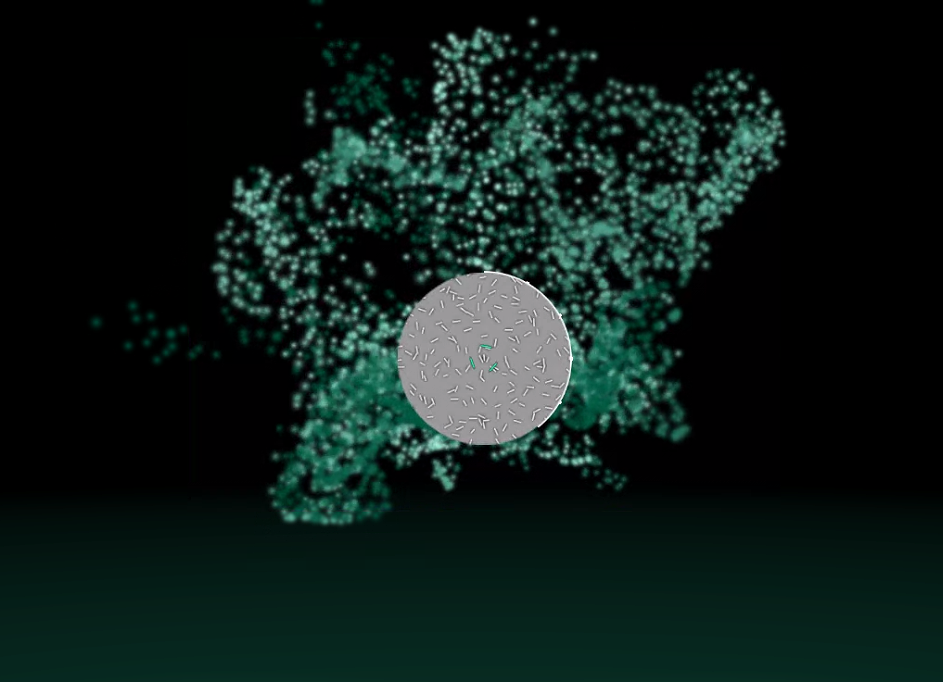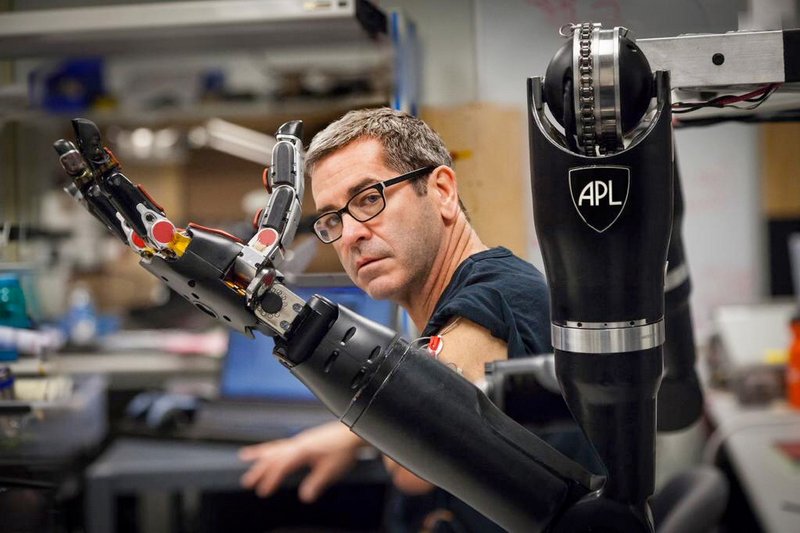
Neurointerface is a system for exchanging information between the human brain and an electronic device. This is a technology that allows a person to interact with the outside world based on recording the electrical activity of the brain - an electroencephalogram (EEG). A person's desire to perform some action is reflected in the EEG changes, which, in turn, is decoded by the computer.
A little background about development
The first neural interface can be considered the Stimoceiver - an electrode device that can be wirelessly controlled using an FM radio. In the 1950s, José Delgado, a neurosurgeon at Yale University, tested it on a bull's brain and changed the direction of the animal for the first time using an NCI (neurocomputer interface).
In the 1960s, neurophysiologist Gray Walter, using electrodes on the scalp of a person, recorded arousal from the movement of a person's thumb. In 1972, the cochlear implant was created, the first neuroprosthesis to be commercially successful in the market. Today, over 25,000 people use these devices to enable deaf people to hear.
In 1998, Philip Kennedy introduced the first neurointerface to the subject under examination. It was the artist and musician Johnny Ray. Thinking or imagining hand movements, Rei controlled the cursor on the computer screen. In 1999, Ian Deng's group at the University of California decoded the signals from the cat's visual system and reproduced the images perceived by its brain. By 2000, Nicolelis's group had created an NCI that reproduces the movements of a monkey while manipulating a joystick. And in June 2004, the first "human cyborg" Matthew Nagle received a fully functional neuroimplant with a neurointerface from Cyberkinetics Inc.

Neurointerface today and in the near future
A huge number of different companies and startups are working on various neural interfaces. French company NextMind has released the first commercial neural interface Dev Kit. Unlike neurointerfaces like Elon Musk's Neuralink, the Dev Kit system is not invasive, that is, it is not implanted, but is attached to the back of the head with a regular rubber band.

Neural interfaces can be unidirectional and bidirectional. The former either receive signals from the brain or send them to it. The latter can send and receive signals at the same time.
There are several methods for measuring brain signals. They are divided into three types:
- Non-invasive. Sensors are placed on the head to measure the electrical potentials generated by the brain and the magnetic field.
- Semi-invasive. The electrodes are placed on the exposed surface of the brain.
- Invasive. Microelectrodes are placed directly in the cerebral cortex, measuring the activity of one neuron.
Calibration by visual image lasts for 45 seconds in the center of the screen appears a circle with a blinking pattern of randomly located "sticks". In the center of the circle there will be a "sight" of three green lines - this is an indicator of concentration. Once you concentrate on the circle, the lines come together to form a triangle. If you are distracted, they will disperse again. To properly calibrate the headset, you need to maintain concentration throughout the calibration. After calibration, you can work safely.

The gadget converts brain signals into digital commands and allows you to control computers and AR / VR headsets. It works as follows: after being put on the back of the head, the device takes an electroencephalogram of the visual cortex, understanding what the user is seeing and feeling when he focuses on a certain subject. This information is then converted into digital items. However, while the headset only works with the user's eyes open, the technology will be improved later. Using the headset, you can control your TV or computer games. To activate a control, you just need to focus on it.
The key feature of the neural interface is that it allows you to connect directly to the brain. What can this give in practice? Neurointerfaces, for example, can make it easier or radically change the life of paralyzed people. Someone cannot write, move or speak. But at the same time, their brain is quite working. The neurointerface will allow these people to perform certain actions by reading intentions using electrodes connected to the brain.

Another option for using the neurointerface was invented by American scientists who have developed a cyber prosthesis that can improve human memory by 30%. The device generates nerve impulses that help the patient to form new memories, remember the faces of relatives. The development is expected to help fight senile dementia, Alzheimer's and other memory problems.
In addition to health, neural interfaces can be used for personal development and entertainment. Neuroheadsets also provide an opportunity and entertainment. But all games and entertainment applications are also tools for self-development. When playing games through a neural interface, you use the conscious states of your consciousness to control characters. And thus learn to control them.
List of references:
- vc.ru/future/18995-neurointerfaces
- www.next-mind.com/technology
- venturebeat.com/2020/12/07/nextmind-real-time-brain-computer-interface-dev-kit